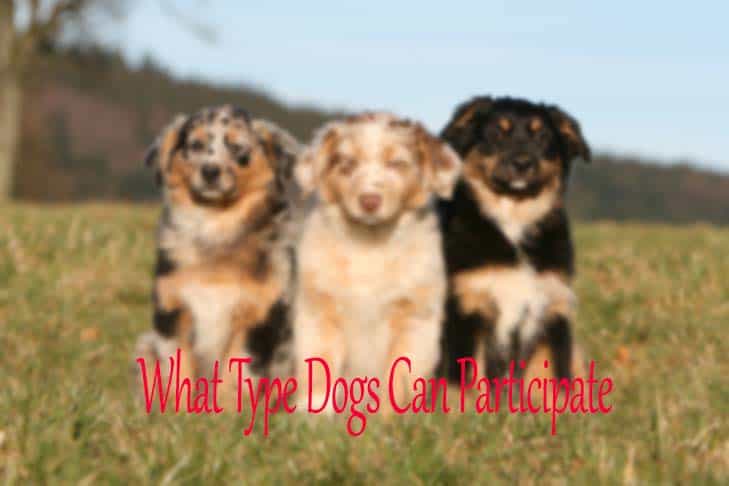Have you ever noticed your dog’s third eyelid showing up and wondered what it means? The third eyelid, also known as the nictitating membrane, is a translucent inner eyelid present in some animals, including dogs. Its sudden appearance can be alarming for pet owners who may not be familiar with this anatomical feature.
In this blog, we will delve into the fascinating world of a dog’s third eyelid, explaining its purpose, common reasons for it showing up, and when it may indicate a more serious underlying issue. Understanding this unique ocular structure is crucial for every dog owner to ensure the well-being and health of their furry companions.
Introduction: The Third Eyelid in Dogs
Understanding the third eyelid on dogs is crucial for every pet owner. This unique feature, also known as the nictitating membrane, serves as an additional protective layer for your furry friend’s eyes. The third eyelid appears in the inner corner of the eye, often unnoticed until it shows up due to various reasons.
Importance of the Third Eyelid
The third eyelid plays a vital role in safeguarding your dog’s eyes from dust, debris, and potential injuries. It contributes to moisturizing the eye surface and aiding in tear production. Additionally, it helps in spreading tears across the eye, promoting optimal eye health.
Common Issues with the Third Eyelid
While the third eyelid is a beneficial protective mechanism, it can sometimes indicate underlying health concerns when showing up. Issues like cherry eye or third eyelid protrusion may require veterinary attention to prevent further complications.

Understanding the Third Eyelid Anatomy
The third eyelid, also known as the nictitating membrane, is a translucent additional eyelid found in dogs, among other animals. It is located in the inner corner of the eye, providing an extra layer of protection and moisture for the eye.
Importance of the Third Eyelid
The third eyelid on dogs plays a crucial role in eye lubrication, protecting the eye from debris, and aiding in tear production. Its presence helps maintain ocular health and shields the eye from potential harm.
Anatomy and Function
The third eyelid’s anatomy consists of cartilage, conjunctiva, and smooth muscle tissue, allowing for swift and subtle movement across the eye’s surface. This unique structure aids in moisture distribution and acts as an added layer of defense.
- The third eyelid provides additional moisture for the eye.
- This structure contains a gland called the ‘Harderian gland’, responsible for tear production.
Signs and Symptoms of the Third Eyelid Showing Up
When it comes to understanding the third eyelid on dogs showing up, it’s essential to be aware of the signs and symptoms that may indicate an issue. One of the primary signs is the visibility of the third eyelid, also known as the nictitating membrane, in the inner corner of the eye. This membrane usually isn’t visible, so its appearance could signal a problem.
Redness and Swelling
Dogs with the third eyelid showing up may exhibit redness and swelling around the affected eye. This could be a sign of irritation or infection (LSI keyword: third eyelid on dog showing).
Excessive Tearing
Another common symptom is excessive tearing or discharge from the eye with the visible third eyelid. This could indicate discomfort or an underlying issue that needs to be addressed promptly.
Possible Causes of the Third Eyelid Presenting Itself
When it comes to understanding third eyelid on dog showing up, there can be several reasons why this phenomenon occurs. One common cause is due to ocular issues such as conjunctivitis or eye infections. These conditions can lead to irritation and inflammation, causing the third eyelid to become more noticeable.
Allergies and Irritants
Some dogs may show their third eyelid due to allergies or exposure to irritants. Allergens like pollen or certain chemicals can trigger a reaction in the eye, leading to the protrusion of the third eyelid. It’s essential to identify and eliminate these triggers to alleviate the symptoms.
Moreover, inflammation of the eye caused by allergens can also contribute to the prominence of the third eyelid.
Underlying Health Conditions
In some cases, the third eyelid may show up as a symptom of an underlying health issue such as corneal ulcers or eye trauma. Dogs with these conditions may display a visible third eyelid as their body’s response to the injury or infection.
- Dry eye syndrome: This condition can cause the third eyelid to appear more prominent due to inadequate tear production.
- Proptosis: Severe eye trauma or sudden impact can lead to proptosis, where the eye is displaced from its normal position, resulting in third eyelid exposure.
Treatments and Remedies for the Third Eyelid Issue
When a dog’s third eyelid shows up, it can be a cause of concern for pet owners. Understanding the underlying causes and available treatments is crucial in addressing this issue effectively.
Consult a Veterinarian
If you notice your dog’s third eyelid showing up, the first step is to consult a veterinarian. A professional opinion can help determine the root cause of the issue and recommend appropriate treatment.
Medication and Eye Drops
In cases where the third eyelid issue is related to an infection or inflammation, your vet may prescribe medication or eye drops to alleviate symptoms and promote healing effectively.
Surgical Intervention
In severe cases where conservative treatments are not effective, surgical intervention may be necessary. Surgery can help correct underlying issues causing the third eyelid to show up abnormally.
Prevention Tips for the Third Eyelid Showing in Dogs
Third eyelid showing in dogs can be a concerning issue that pet owners may notice. To prevent this condition from occurring or worsening, here are some essential tips to keep in mind:
Regular Vet Check-ups
Regular check-ups with your veterinarian are crucial in monitoring your dog’s eye health. Routine eye examinations can help detect any early signs of third eyelid showing and other related eye problems.
Ensure to have your dog’s eyes checked at least once a year to ensure optimal eye health LSI keywords third eyelid on dog showing.
Proper Nutrition
Providing your dog with a balanced diet rich in essential nutrients is vital for overall health, including eye health. Make sure your dog’s food contains necessary vitamins and minerals to support eye function and health.
- Include foods rich in Omega-3 fatty acids to promote eye health.
- Consult your veterinarian for recommendations on specific eye-supporting supplements.
Environmental Considerations
Keep your dog’s environment clean and free of potential eye irritants that could lead to eye problems, such as the third eyelid showing. Eliminate any potential allergens or irritants that could affect your dog’s eyes.
Ensure your dog’s living area is well-ventilated and free from dust or other particles that could cause eye irritation.
Frequently Asked Questions
- What is the third eyelid in dogs?
- The third eyelid, also known as nictitating membrane or haw, is a transparent inner eyelid found in the corner of the eye closest to the nose. It plays a crucial role in protecting the eye and maintaining ocular health.
- Why does the third eyelid show up in dogs?
- The third eyelid may show up in dogs due to various reasons such as illness, injury, irritation, or eye infections. It can be a sign that something is not right with your dog’s eyes and may require veterinary attention.
- Is it normal for the third eyelid to be visible in dogs?
- In some situations, it is normal for the third eyelid to be slightly visible in dogs, especially when they are relaxed or sleeping. However, if the third eyelid is consistently showing up or if there are other symptoms present, it is advisable to consult a veterinarian.
- What are some common problems associated with the third eyelid in dogs?
- Common problems associated with the third eyelid in dogs include cherry eye (prolapse of the third eyelid gland), eye infections, trauma, and other eye conditions. Regular eye care and check-ups can help prevent and detect these issues early.
- How can I care for my dog’s third eyelid?
- Caring for your dog’s third eyelid involves keeping their eyes clean, monitoring for any changes or issues, and seeking veterinary care if you notice any abnormalities. Regular eye examinations as part of your dog’s overall health check-ups are recommended.
Unraveling the Enigma: Decoding the Third Eyelid Phenomenon in Dogs
Understanding the third eyelid on dogs showing up is not merely a peculiar occurrence but a vital indicator of their well-being. This often-overlooked eyelid serves as a protective shield, signaling potential health issues that demand attention. By delving into the significance of this anatomical feature, we empower ourselves to decipher subtle signs of distress in our beloved canine companions.
In summary, the appearance of the third eyelid on dogs is not a cause for alarm but a call for vigilance. It prompts us to observe, investigate, and promptly address any underlying health concerns. By staying informed and proactive, we uphold our role as responsible pet parents, ensuring the holistic welfare of our furry friends.



